Blog
The Waste Hauler’s Guide to Modernizing Recycling Communications For Today’s Customers
by Aidan McLennan • August 7, 2019
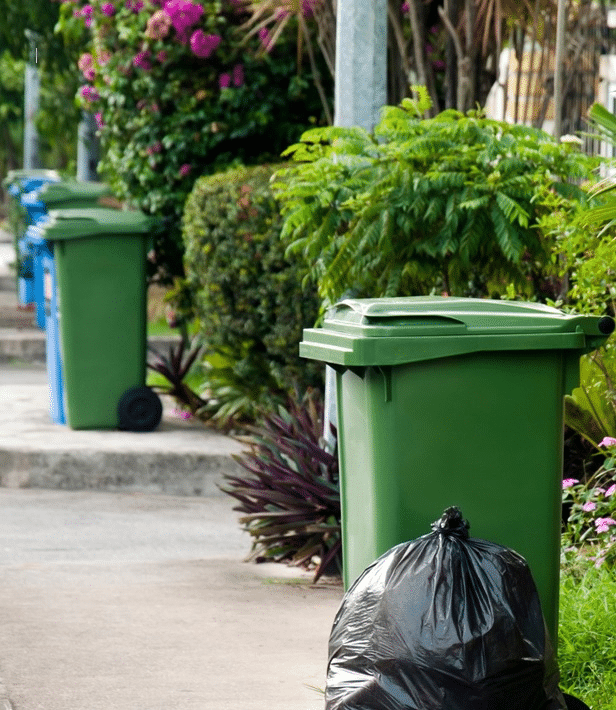
Strapped for time? Download this guide in PDF format.
It’s never been more challenging to keep a recycling business running. At the same time, proper recycling and waste management has never been more critical to the health of our communities and the planet.
With the China trash ban of 2018 creating a sea change in markets, national media headlines decrying a recycling system in crisis, and hometown recycling programs closing amid the chaos, some private waste haulers are struggling to adjust.
Further complicating matters, contamination consumes nearly a quarter of the space in every recycling truck in the United States, and a majority of recyclers don’t really know what they’re supposed to be recycling in the first place.
Well, as they say, when the going gets tough, the tough get going.
This guide offers 10 ways to get going, proposing that by improving recycling communications, we can clean up the recycling stream and simplify daily business operations, and thereby continue to provide a critical and fundamental service to our communities.
I. Content Summary
Strapped for time? Here is a condensed summary of this guide:
- Confirm first: Confirm what’s recyclable with your MRF in light of international market changes.
- Be clear and concise: Use phrases and bullets, eliminate repetition and stay consistent.
- Improve customer service the easy way: Overcome the most common customer complaints through improved, up-to-the-minute communication.
- Completely normal: Cast recycling right as a social norm in your communications and watch contamination reduce dramatically.
- Stop the negativity: Don’t focus too much on what not to do in recycling. It could actually encourage contamination.
- Harness wish-cyclers: Get your most enthusiastic but sometimes error-making recyclers on board with detailed messages that satisfy their curiosity.
- Use the 1-5-50 rule: One thought only can be communicated successfully via broad media. Five things will be heard in a group setting. More than 50 ideas need to live in a searchable database.
- Hone with data: Use the search information your customers provide to guide future messaging.
- Go mini: Launch a short-lived, extra-focused campaign to get the word out on a single tough issue.
- Save time and money: Use an app-based recycling solution, such as ReCollect to reduce call volumes, brand your program and delight people, too. Call centers love it when their employees can find the answer to customer challenges quickly and easily. This reduces call times and training times.
II. 10 Ways to Improve Your Program
For a more in-depth read, what follows is the research behind the quick tips from Section I.
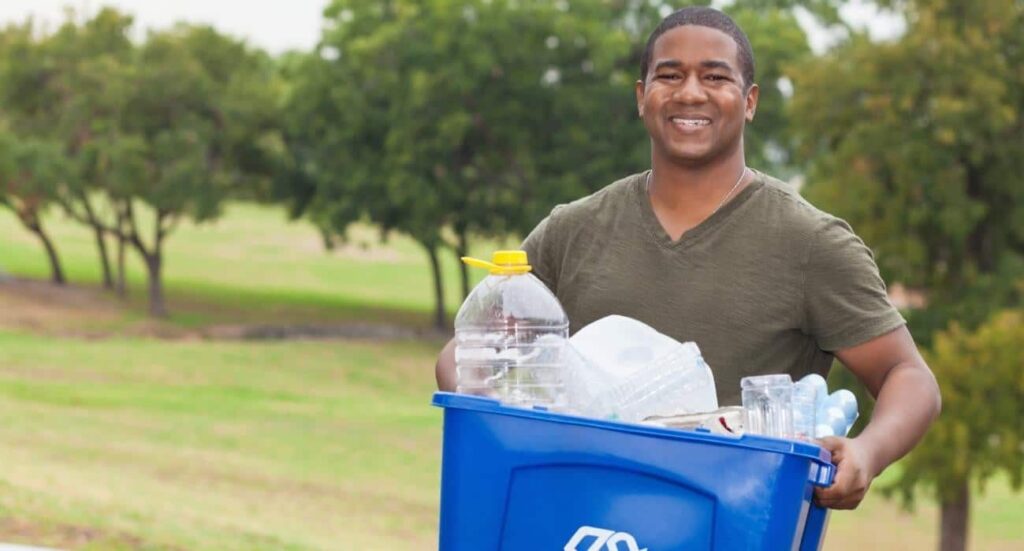
1. Confirm what’s recyclable
About 60 percent of recycling programs communicate conflicting information to customers about what goes where. How long has it been since you confirmed what’s recyclable with your MRF?
In its 2017 MRFShed Report, The Recycling Partnership revealed that a majority of communities (60 percent) published conflicting information about what’s recyclable. With major news coverage of the China ban under headlines such as “China’s Import Ban Broke Plastics Recycling” (National Geographic, June 2018), customers may be understandably wary of their good-faith recycling efforts going to waste—literally. At this critical juncture with your customers, it’s more important than ever to build trust through open communication. Start by confirming what’s getting recycled using a tool such as this one.
Source: The Recycling Partnership’s 2017 MRFShed Report
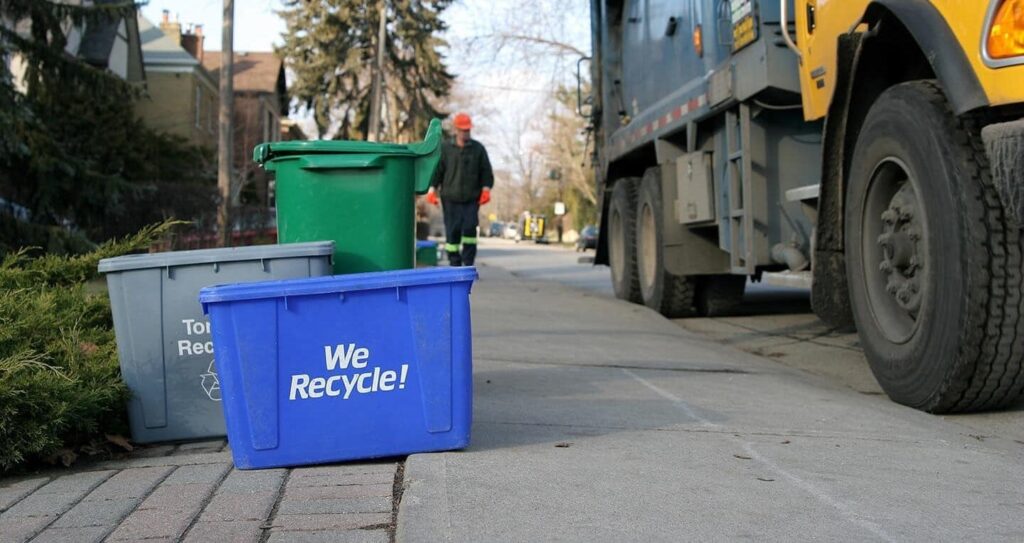
2. Make recycling instructions clear and concise
Recycling messages must be clear and to-the-point for customers to remember them. Luckily, there are a few easy rules and tools you can use to make sure your messages are on-point.
The research on attention is clear: Most people have an attention span of about eight seconds and can remember a string of seven items. The good news is, you don’t have to be a great writer to create clear, engaging recycling copy.
Here’s how:
- Use phrases and bullets.
- Eliminate repetition.
- Focus on customers’ most-searched items. If using the ReCollect Waste Wizard, highlight the top seven most-asked-about materials.
- Stay consistent and repeat your message early and often. See No. 2 above.
3. Provide old-fashioned customer service like it’s 2019
Today’s solid waste customer may have a smartphone in her hand, but she still wants great, old-fashioned customer service. It’s simpler than ever to provide the level of customer care you strive for without adding staff through easy-to-adopt technology.
According to a January 2019 article from Waste 360, half of customer turnover is service-related. Missed or late pickups are among the cited reasons that customers stop subscribing. While it may not be possible to avoid every operational glitch that may affect collection, it is possible to let customers know when they can expect a delay or other unavoidable inconvenience ahead of time, or ‘in the moment’, with text and calendar alerts made available through collection apps. And sometimes, a little communication goes a long way.
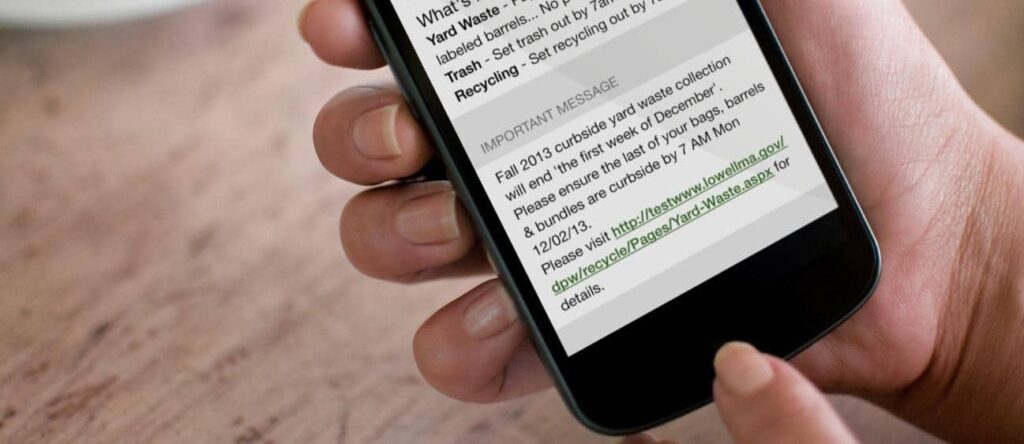
4. Turn up the pressure
Use digitally-delivered ongoing communication to inexpensively target routes with high contamination. Regular messages casting recycling correctly as a positive social norm could help reduce contamination significantly.
Consider the following:
- Recycling messages that treat recycling as the normal thing to do can drive customers to recycle right. It’s positive peer-pressure: “Everybody’s doing it.”
- Recycling messages that treat incorrect recycling as an outlying behavior—one that’s outside the norm—can help reinforce positive recycling values. Kind of like peer-pressure in reverse.
Robert Cialdini, professor of psychology at Arizona State University, created recycling ads that followed these rules to step up compliance by 25 percent.
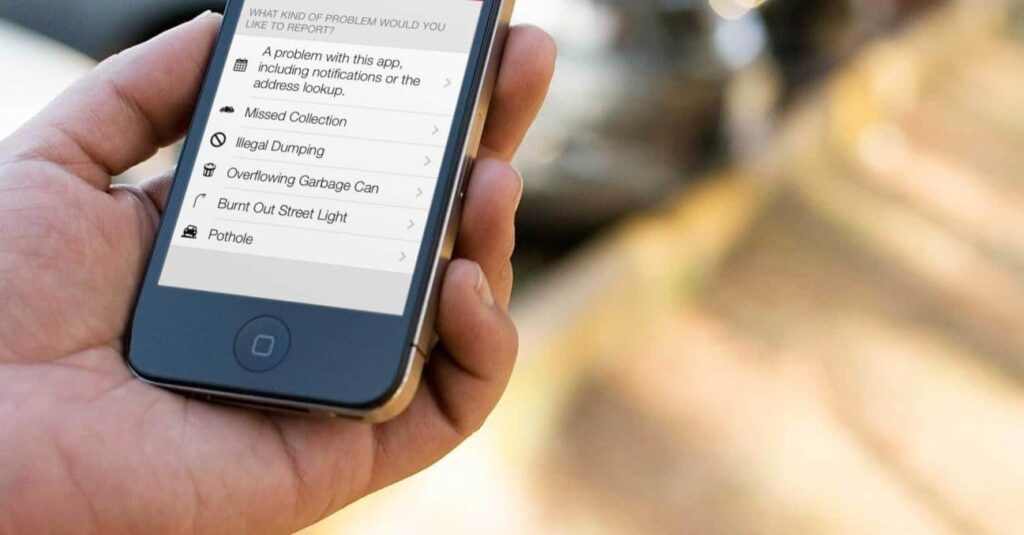
5. Stop raising awareness about what not to do
Shedding light on positive recycling behaviors can reap equally positive results, but did you know that too much focus on negative behaviors can encourage them? Keep recycling messages positive!
This can be a tough message in today’s recycling atmosphere, but one that’s important to consider. With average recycling contamination rates topping 25 percent, recyclers feel the pinch when customers don’t recycle right. And yet, focusing too much on what not to do when it comes to recycling can backfire.
In other words, if customers get the message that film plastics, electronics, household hazardous materials, and other non-recyclable items contaminating the stream are ubiquitous, they may assume that their own good recycling habits are outside the norm—and then drop them. Ultimately, if they believe that most people recycle incorrectly and that the system itself is in chaos, they may ask themselves whether their actions matter. It’s our job to help them understand that they do.
Source: “Does Raising Awareness Change Behavior,” by Sara Gorman, Ph.D., MPH, and Jack M. Gorman, MD (Psychology Today magazine, June 2018).
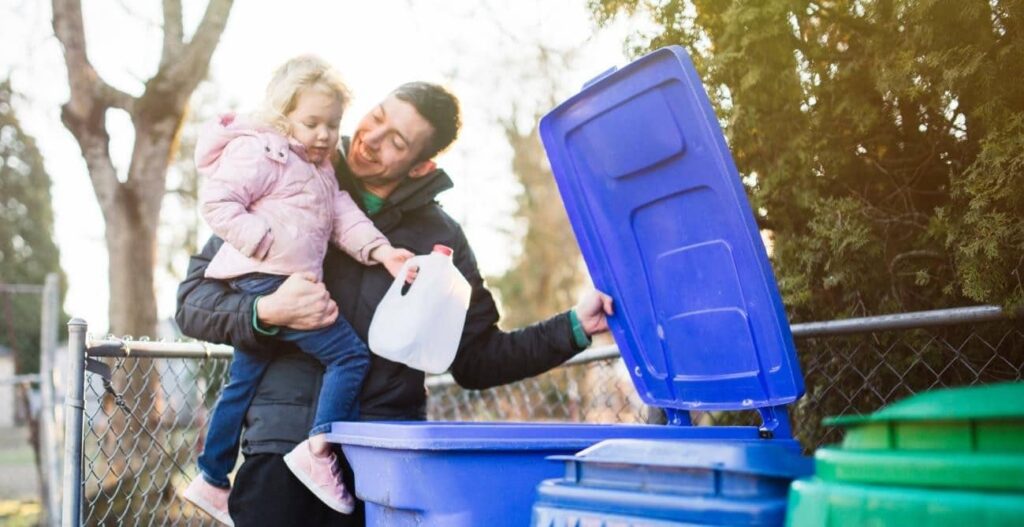
6. Harness the power of wish-cyclers
About 25 percent of the material placed in curbside recycling containers is trash—and an unknown portion of this is material that was “wish-cycled.” Otherwise good recyclers may be your worst wish-cyclers. Luckily, they’re an easy population to reach.
You know the wish-cyclers. They’re the customers who want to recycle so badly, sometimes they toss the wrong stuff into the bin. The good news is, wish-cyclers are usually tapped in. And when you give them a good reason to follow them, wish-cyclers transform in your best recyclers. Here’s how to take advantage:
- Listen to your wish-cyclers.
- Address their concerns—plastics without numbers, plastic containers not recyclable in your system, organics, the list goes on—with communications that speak to them. Creating an FAQ page on your website could help.
- Get nitty-gritty. While most recyclers need high-level information, wish-cyclers crave details. Think about penning a blog post or short article for your e-news to more deeply inform and connect.
7. Use the 1-5-50 rule
By using the 1-5-50 strategy in your recycling communications, you can do a better job of presenting information to customers in ways that will help them retain it, thereby leading to better outcomes.
What’s the 1-5-50 rule? It’s basically a hierarchy for organizing information that keeps the listener’s ability to understand and retain information front-and-center:
- 1: In mass communications, such as billboards or quick radio and TV messages, focus on just one thing. It might be “recycle right,” “visit our recycling website,” or “download our recycling app.”
- 5: If you need to share five pieces of information, you’ll need to use a messaging medium that allows you to hold your audience’s attention a little longer. They’ll need the processing time. Save multiple messages for in-person talks, presentations and events.
- 50: No customer will remember 50 things about recycling—they just can’t. For example, it’s not feasible to expect customers to memorize lists of what’s recyclable. The fix is to present such information in an “organized, scannable, searchable” manner. This is where digital tools such as a searchable database of materials and where they go for disposal, can really shine.
Source: Elizabeth Schussler, Vice President of Program Design at Recycling Partnership
8. Use customer data to hone recycling communications
If you’re able to collect data about your customers’ recycling questions, you can use it to improve your communications immediately. Tapping into search data from an app such as ReCollect can help.
Can you view the terms customers are searching for on your website? If you’re using an online tool or recycling app to engage customers with “what goes where” information, such as ReCollect’s Waste Wizard, do you review the terms for which customers search?
Consider:
- Digital solutions can empower us to connect with customers because they give us improved tools for listening, which then allow us to hone programmatic information to reflect their concerns.
- In one community, the recycling coordinator reviewed a list of top-searched terms from the ReCollect Waste Wizard once per month and used the most searched materials as a guide when making website updates. This information is also especially helpful when creating targeted educational materials, as does the Connecticut Department of Energy and Environmental Protection (www.recycleCT.com).
- Often-searched materials can be highlighted in above-the-fold homepage news items and included in regular eNewsletters.
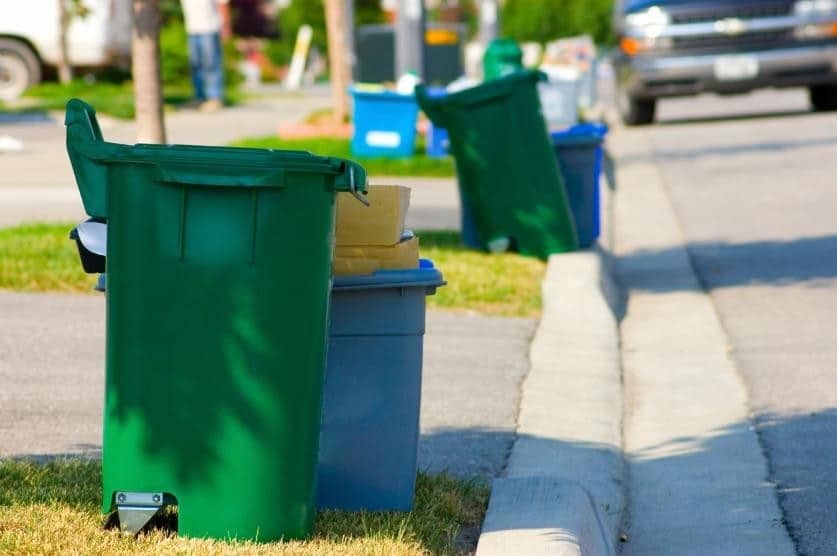
9. Launch a mini-campaign
Sometimes we make the mistake of thinking that good recycling communication needs to be a big deal to get the job done. Not so. In fact, a small, targeted campaign—a series of short messages shared in various ways–can reap the best results if your goal is to reach the largest number of people possible.
Pick just one recycling issue: An item or material that’s misunderstood by your customers, or a collection problem you’d like to address. Whatever the issue, a mini-campaign can help get the word out without much hassle:
- Place a banner on your website that links to a single page about the issue or idea
- Add a quick, upbeat note to customer invoices reminding them of what to do
- Add a one-sentence reminder (with a link) to digital collection reminders you’re sending via any recycling software you’re using
- Remember the 1-5-50 rule and keep it simple (See No. 8)
10. Save time and money—and maybe your business itself
Current recycling market pressures coupled with concerning contamination rates are making customer communication more important than ever before. Customer understanding of what’s recyclable has never been more critical for haulers than it is today— and yet most haulers have less time for communication. Enter new, app-based digital solutions to help you regain control.
Digital communications software can help get the word out about when and how to recycle right in a manner that’s affordable and easy to use. Plus, the right software can all but eliminate phone calls about collection days and replace tedious, wasteful mailings that can take weeks to prepare, only to end up in the recycling stream days later. Moreover, the right solution can save money by reducing the amount of staff time spent performing tasks better managed through technology-based means.
According to a 2017 report by the Austin American-Statesman newspaper, Austin Resource Recovery saved $66,000 per year when they nixed printing and mailing paper recycling calendars, which a report had shown only seven percent of customers were using.
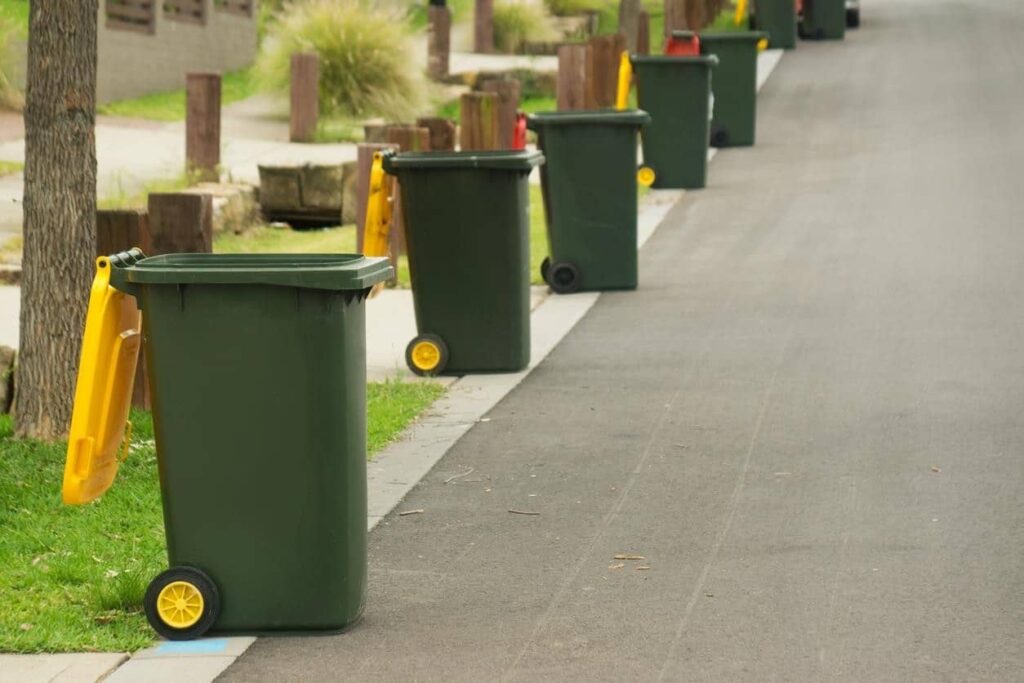
Learn More
ReCollect is a digital communications company that serves the waste and recycling industry. Our unique communication tools help private haulers reduce call volumes, increase operational efficiency and increase diversion. Want to discuss our products for your community or organization? Let’s talk!